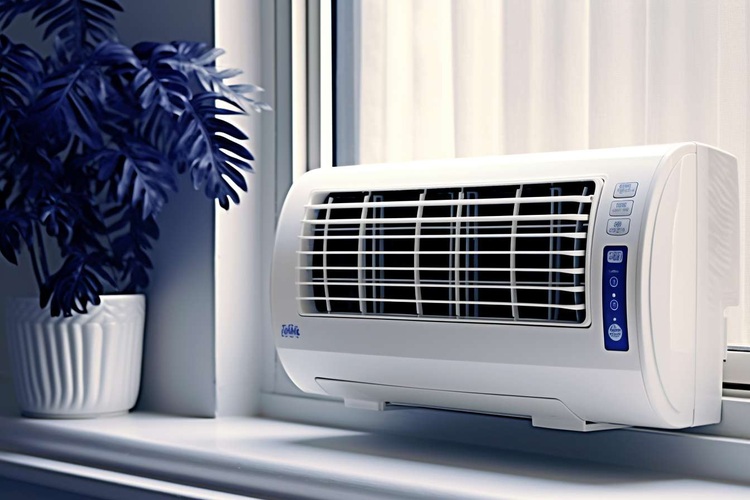Ductless AC: Efficient Cooling for Modern Homes Today
Discover how ductless air conditioning delivers targeted, energy-efficient home cooling without the hassles of ducts. Ideal for new builds, retrofits, and hard-to-reach rooms, ductless systems offer zoned temperature control, lower energy loss, and long-term cost savings. Learn where they work best, how they compare to central, window, and portable units, and what maintenance keeps them running optimally. Perfect for homeowners seeking comfort, value, and reduced energy use.

Introduction
Ductless air conditioning has become a popular alternative to traditional central systems and window units. These systems provide flexible, room-by-room cooling with fewer installation constraints and improved energy performance. Below is a clear look at why homeowners choose ductless, where they fit best, how they stack up against other options, and what upkeep they require.
Key Advantages of Ductless Air Conditioning
- Higher energy efficiency: Without long runs of ductwork, ductless systems avoid the heat gains and losses that reduce central air performance. This often translates into lower monthly energy bills.
- Precise zone control: Indoor units operate independently, so you can set different temperatures for specific rooms or areas. That zoning capability prevents energy waste by cooling only occupied spaces.
- Flexible installation: Compact indoor heads and a small outdoor condenser make it easier to add cooling to spaces where ducts are impractical.
- Comfort and longevity: Ductless systems generally offer reliable, even cooling and tend to last longer than many window units when maintained properly.
Where Ductless Units Are Most Useful
Ductless air conditioners are versatile and can be installed in many parts of a home:
- Living rooms and family rooms where comfort is needed for long periods.
- Bedrooms, where quiet operation and individual temperature control improve sleep.
- Sunrooms and enclosed porches that lack existing ductwork.
- Home offices, providing a dedicated climate for productivity.
- Converted or older spaces such as attics, basements, garages, or additions where running ducts would be costly or impossible.
Because indoor units mount on walls, ceilings, or floors and connect to the outdoor unit via a small conduit, installation is often quicker and less invasive than adding ductwork.
Is a Ductless System a Good Investment?
Upfront costs for ductless installations can be higher than buying a single window unit or, in some cases, adding small central-system upgrades. However, several factors make ductless systems a smart long-term choice:
- Reduced energy bills over time thanks to efficient operation and zoning.
- Increased home value, since many buyers view modern, flexible HVAC options favorably.
- Longer usable life compared with many portable or window units, which can lower replacement frequency and long-term expense.
- Lower environmental impact through reduced energy consumption when sized and used correctly.
For homeowners focused on comfort, resale value, and ongoing savings, the initial investment often pays off over several years. As always, compare quotes and projected savings before deciding.
How Ductless Systems Compare to Other Cooling Methods
Here is a practical comparison of common cooling approaches, focusing on efficiency, installation, zoning, and visual impact:
- Ductless AC
- Energy efficiency: High, due to minimal distribution losses and inverter-driven compressors on many models.
- Installation complexity: Moderate; requires mounting indoor heads and a short exterior line set.
- Zoning capability: Excellent, with independent controls per indoor unit.
- Aesthetics: Indoor units are visible but slim and modern, often blending with interior decor.
- Central AC
- Energy efficiency: Moderate; performance depends on duct condition and insulation.
- Installation complexity: High if ducts must be added or modified.
- Zoning capability: Limited unless a multi-zone system or dampers are installed.
- Aesthetics: Minimal interior impact, since most equipment is hidden in ducts and utility spaces.
- Window AC
- Energy efficiency: Low to moderate; efficiency varies by model and window seal quality.
- Installation complexity: Low; units fit into a window opening.
- Zoning capability: Limited to the room where the unit is installed.
- Aesthetics: Highly visible from both inside and outside; may obstruct window views.
- Portable AC
- Energy efficiency: Generally low compared with ductless or central systems.
- Installation complexity: Very low; usually just a small vent hose through a window.
- Zoning capability: Good for single-room use but less effective in open areas.
- Aesthetics: Bulky and visible within the room.
Maintenance Needs for Ductless Systems
Routine care keeps ductless systems efficient and extends their service life:
- Filter care: Clean or replace filters regularly, typically monthly during heavy use, to maintain airflow and indoor air quality.
- Keep outdoor unit clear: Remove leaves, dirt, and debris from around the condenser and ensure at least a modest clearance for proper airflow.
- Professional service: Schedule an annual checkup with a qualified HVAC technician to inspect refrigerant levels, clean coils, test electrical components, and verify overall system performance.
- Address issues early: Strange noises, reduced cooling capacity, or higher energy bills may indicate a need for service.
With simple preventative steps and annual inspections, a ductless system can deliver reliable comfort for many years.
Conclusion
Ductless air conditioning is a flexible, energy-conscious choice for homeowners who need targeted cooling without the expense or disruption of ductwork. Its zoning capabilities, strong efficiency, and adaptability for a range of spaces make it an attractive option for new homes, retrofits, and individual rooms. While initial costs may be higher than some alternatives, the potential for lower energy bills, longer equipment life, and added home value make ductless systems worth considering for modern home cooling needs.






